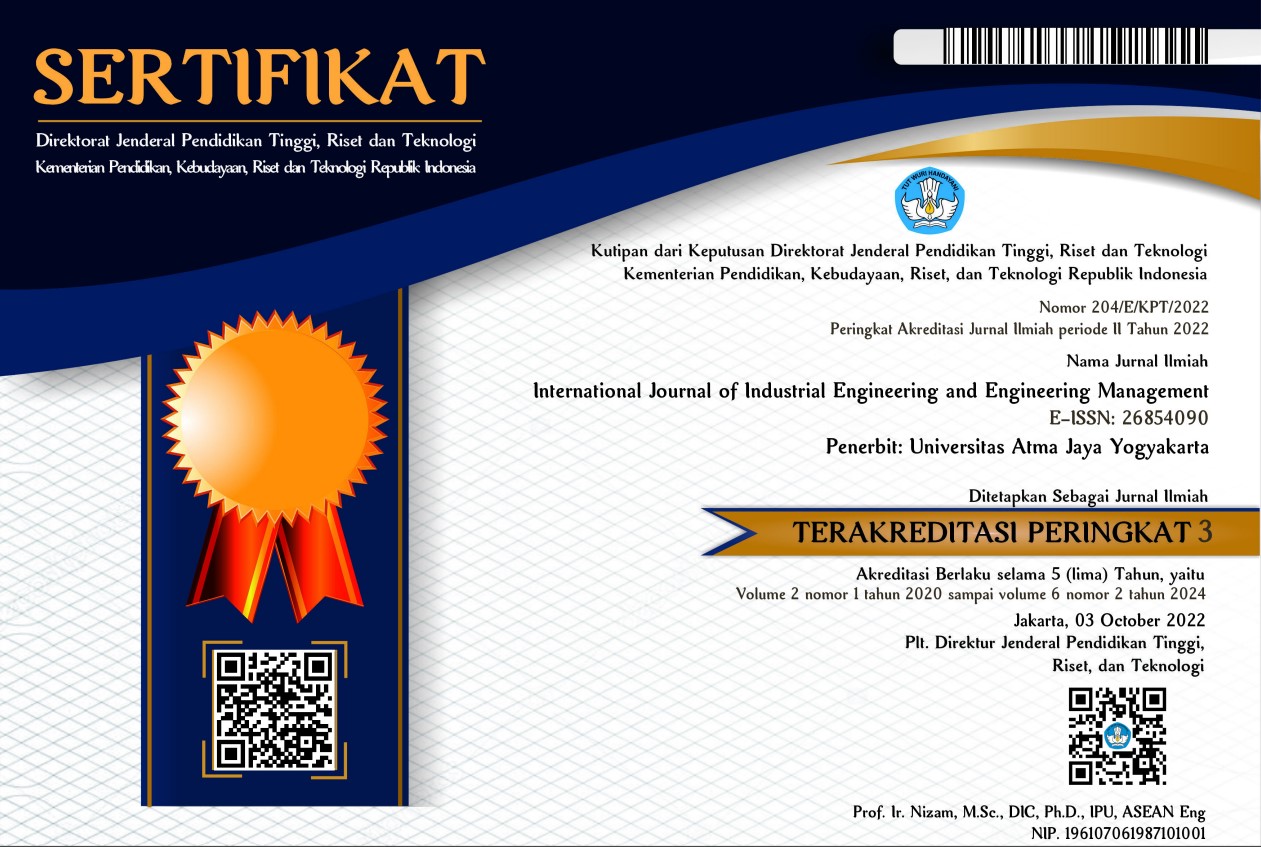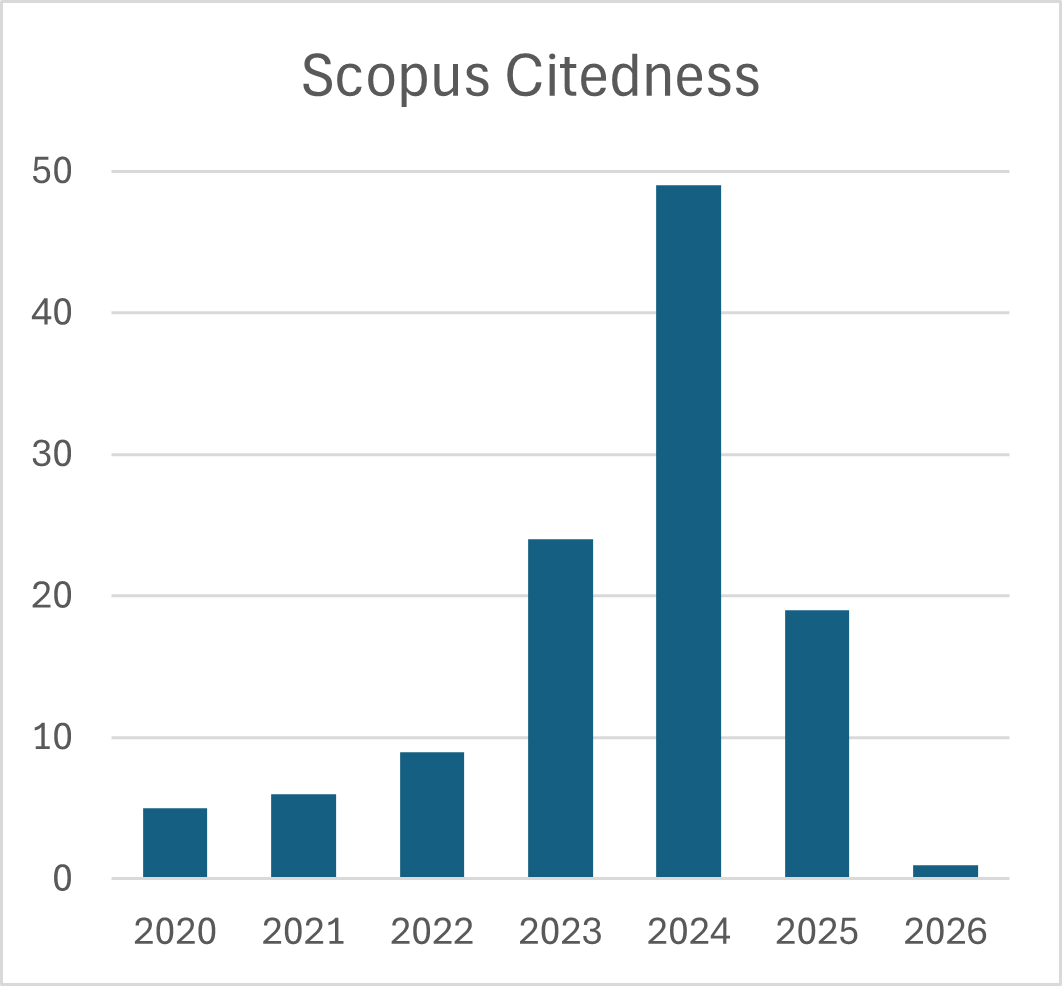An Inventory Model Considering All Unit Discount and Carbon Emissions
DOI:
https://doi.org/10.24002/ijieem.v1i2.3410Keywords:
inventory, EOQ model, all unit discount, carbon emissionsAbstract
Consumer satisfaction is an important factor in the ongoing business process. Companies must be able to meet consumer demands and considers customers’ concerns on price. In a supplier and customer relationship, a given discount will affect the order size. Besides, in the current developing industry, environmental factors must be considered without disturbing the business. Recently, researchers and practitioners develop environmentally-friendly industries so that the environment will be well managed and not polluted. For example, carbon emissions can be managed by optimizing the production operation and product distribution. This paper presents a study on the relationship between discount on the economic order quantity model and the total carbon emissions. This research develops a procurement model by considering an all-unit discount system and carbon emission tax. The aim is to determine the optimal order that minimizes the total cost.References
Benjaafar, S., Li, Y. & Daskin, M. (2013). Carbon footprint and the management of supply chains: Insights from simple models. IEEE Transactions on Automation Science and Engineering,10, 99-116.
Bonney, M. & Jaber, M. (2011). Environmentally responsible inventory models: Non-classical models for a non-classical era. International Journal of Production Economics. 133. 43-53.
Chen, X., Benjaafar, S. & Elomri, A. (2013). The carbon-constrained EOQ. Operations Research Letters. 41. 172–179.
Daryanto, Y., Wee, H.M. & Widyadana, G.A. (2019). Low carbon supply chain coordination for imperfect quality deteriorating items. Mathematics, 7 (3), 234.
Djunaidi, M., Nadiroh, S. & Marzuki, I. O. (2005). Pengaruh perencanaan pembelian bahan baku dengan model EOQ untuk multiitem dengan all unit discount. Jurnal Ilmiah Teknik Industri, 4, 86-94.
Gupta, O.K. (1988). An improved procedure for economic order quantity with all-units price discounts. International Journal of Operations & Production Management, 8, 79-83.
Gupta, O.K. (1992). A lot-size model with discrete transportation costs. Computers & Industrial Engineering, 22 (4), 397-402.
Hovelaque, V. & Bironneau, L. (2015). The carbon-constrained EOQ model with carbon emission dependent demand. International Journal of Production Economics, 164, 285–291.
José, L.A. & García-Laguna, J. (2003). An EOQ model with backorders and all-units discounts. TOP: An Official Journal of the Spanish Society of Statistics and Operations Research, 11, 253-274.
Kazemi, N., Abdul-Rashid, S.H., Ghazilla, R.A.R., Shekarian, E. & Zanoni, S. (2018). Economic order quantity models for items with imperfect quality and emission considerations. International Journal of Systems Science: Operations & Logistics, 5 (2), 99-115.
Limansyah, T. & Lesmono, D. (2011). Model persediaan multi item dengan mempertimbangkan faktor kedaluwarsa dan faktor all unit discount. Jurnal Teknik Industri, 13 (2), 87-94.
Swenseth, S.R. & Godfrey, M.R. (1992). Incorporating transportation costs into inventory replenishment decisions. International Journal of Production Economics, 77, 113-130.
Taleizadeh, A.A. & Pentico, DW. (2014). An economic order quantity model with partial backordering and all-units discount. International Journal of Production Economics, 155, 172-184.
Tao, Z. & Xu, J. (2019). Carbon-regulated EOQ models with consumers’ low-carbon awareness. Sustainability, 11 (4), 1004.
Tersine, R.J. (1994). Principles of Inventory and Materials Management, 4th ed. Prentice-Hall International, Inc: New Jersey.
Wang, S. & Ye, B. (2018). A comparison between just-in-time and economic order quantity models with carbon emissions. Journal of Cleaner Production, 187, 662-671.
Wangsa, I.D. & Wee, H.M. (2020). Integrated inventory system with freight costs and two types of quantity discounts. International Journal of Logistics Systems and Management, 35 (1), 119-147.
Wee, H.M. & Daryanto, Y. (2020). Imperfect quality item inventory models considering carbon emissions. In Shah, N.H. & Mittal, M. (eds.) Optimization and Inventory Management. Singapore: Springer Nature, pp 137-159
Widodo, D.S. & Utama, D.M. (2019). Analisis model sustainable economic order quantity dengan mempertimbangkan emisi karbon dan batasan kapasitas gudang untuk menekan total biaya persediaan. Teknik, 40 (3), 169-175.
World Bank (2020). Carbon pricing dashboard. Retrieved from carbonpricingdashboard.worldbank.org/








